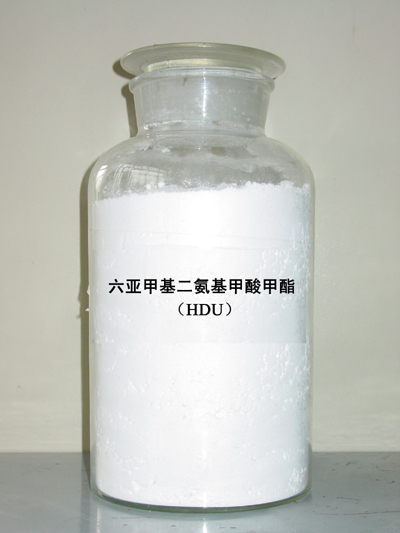New Progress in Catalytic Synthesis of 1,6-Hexamethylene Diurethane
New progress in catalytic synthesis of 1,6-hexamethylene diurethane (HDU) was achieved by R&D Center for Green Chemistry and catalysis, Lanzhou Institute of Chemical Physics, CAS. And this synthetic technology obtained national invention patent.
1,6-hexamethylene diurethane was synthesized through the alloy-catalyzed reaction between 1, 6-hexanediamine and dimethyl carbonate. With the technology, high purity products can be obtained under mild reaction conditions. Moreover, the alloy catalysts are cheap and with less loss and long service life. They can also be easily recovered. Compared to traditional catalysts such as zinc acetate powder, zirconium dioxide powder, lead chloride, ionic liquids, the alloy catalysts are more favorable since traditional catalysts are expensive, hard to be separated and have low mechanical strength. And they can cause serious corrosion of facilities. By thermal decomposition of 1,6-hexamethylene diurethane into hexamethylene diisocyanate (HDI) which is an important industry materials, the non-phosgene method provides a safe, cheap and environmentally friendly synthetic routine for HDI. It has a good prospect in industry.
Background information:
As an important organic intermediate, isocyanate is wildly used in industry, agriculture, medicine and health. HDI, a non-yellowing aliphatic diisocyanate, is mainly applied to produce automotive OEM coatings and its repairing coating, airplane OEM paint and its repairing coating, anticorrosive coating, wood furniture coating, adhesive and rocket propellant and so on.
Isocynate was synthesized traditionally through the reaction between amine compounds and toxic phosgene, which usually could lead to equipment corrosion, phosgene leakage, environmental pollution and injury of operating personnel. And during the reaction process, great amount of corrosive hydrogen chloride can be generated. With the growing awareness of environment protection worldwide, non-phosgene synthesis method of isocynate has become a research focus. Previous research has indicated that through the carbonylation of amine with dimethyl carbonate as the carbonylation regent, corresponding carbamate can be obtained. Then through thermal decomposition of carbamate, corresponding isocyanate can be obtained.
